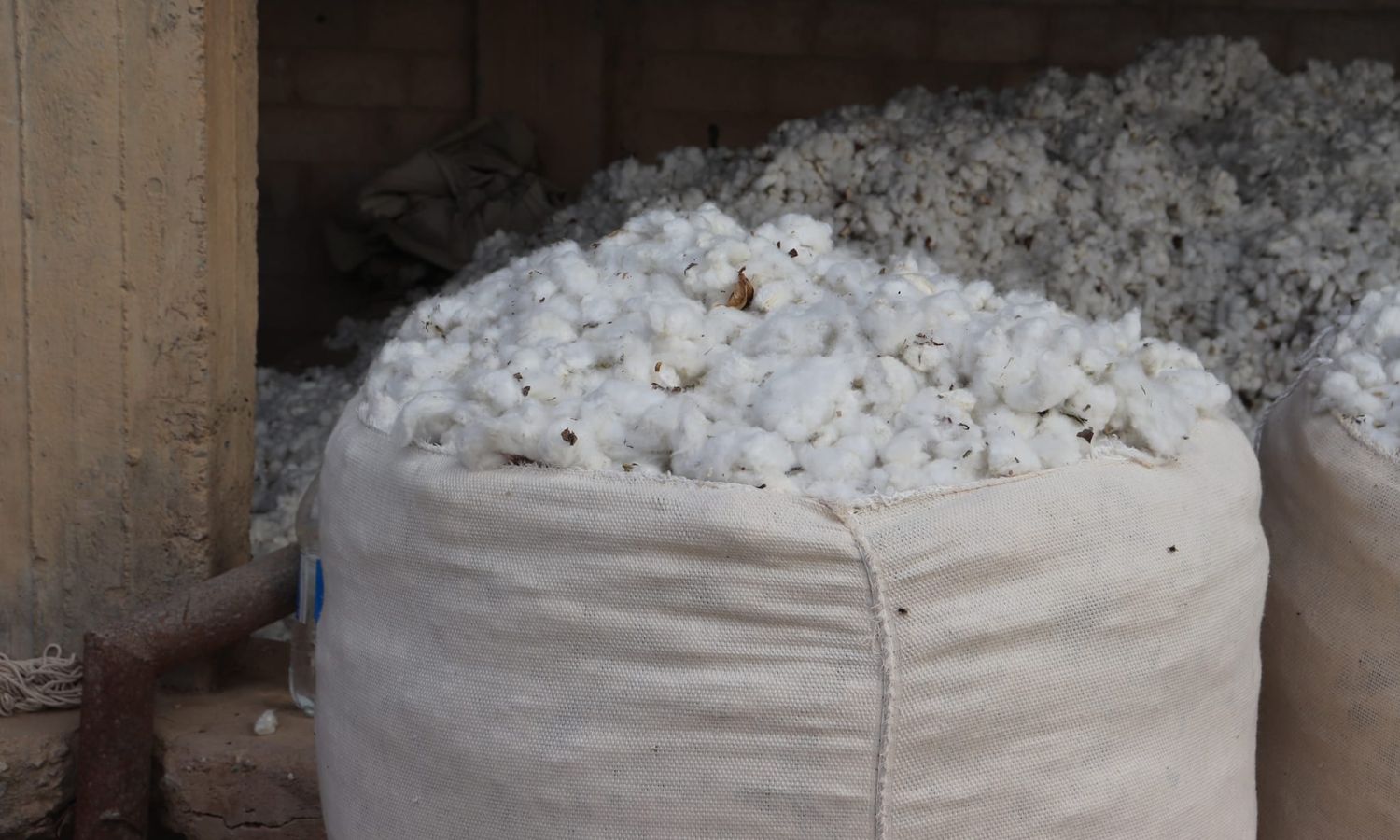



An official in the Syrian regime’s government has specified the geographical distribution of cotton cultivation areas in Syria, stating that 28% of the planned areas are in “safe areas.”
The Director of Planning and International Cooperation at the Ministry of Agriculture, Nazek al-Ali, explained that there are factors preventing access to the full production needs of the cotton crop, including the majority of the producing areas being outside of the regime’s control and the impossibility of expanding the cultivated areas in “safe areas” due to limited water resources according to the adopted “water balance,” as reported by the official Syrian news agency (SANA) on Monday, January 15.
Al-Ali stated that planning for the cotton crop is coordinated with the Ministry of Industry to meet the needs of public sector institutions for textile industries based on the water resources available in the water balance approved by the Ministry of Water Resources from water sources such as springs, rivers, and government irrigation projects, as its cultivation on wells is prohibited.
In the past season, 14,828 hectares were planned for cultivation to produce about 44,484 tons in areas under regime control, according to al-Ali, who justified the reduction of the planned areas to 13,393 hectares, of which 7,175 hectares were implemented to produce about 17,000 tons and to market 15,866 tons so far, due to the deterioration of the water reality and the decrease in the storage capacity of dams allocated for agriculture.
Irrigation of the cotton crop in the Damascus countryside was permitted with treated sewage water.
“To encourage farmers to cultivate all the planned areas” of cotton, according to al-Ali, the purchasing price of one kilogram of raw cotton was set at 10,000 Syrian pounds after it was delivered to the Public Establishment for Ginning & Marketing of Cotton reception centers, with the farmer bearing the increased transportation costs.
For the current agricultural season (2023-2024), the planned area in regime-controlled areas is 14,419 hectares, with an expected production of 43,257 tons, according to al-Ali.
The Syrian regime’s government has raised the purchasing price of raw cotton from farmers for the current season to 10,000 Syrian pounds per kilogram, up from 4,000 pounds in September 2023.
The government has not been able to pay the value of the cotton marketed by farmers to its institutions in its controlled areas. In mid-October 2023, the head of the Professional Union of Spinning and Textile Workers, Mohammed Azouz, stated that the government’s failure to pay for the cotton up to that point had led to farmers’ apprehension about marketing and, consequently, a decline in the reception process.
Azouz explained that the delay resulted from raising the purchasing price of cotton from farmers from 4,000 to 10,000 Syrian pounds, thereby increasing the value of the loan requested by the Public Establishment for Cotton from the Ministry of Finance to 562 billion Syrian pounds out of a total of 182 billion pounds approved by the government to grant it.
The regime’s government competes with the Autonomous Administration of North and East Syria (AANES) to purchase basic crops from farmers, with AANES controlling the most prominent agricultural areas in Syria.
According to farmers met by Enab Baladi, this year’s cotton crop in al-Hasakah governorate, northeast Syria, is under severe pressure due to the inability to secure the necessary water quantities for irrigation, along with fuel scarcity, rising fertilizer prices, and AANES setting a price that did not satisfy the farmers at 0.8 US dollars per kilogram (about 11,000 Syrian pounds) without announcing the purchase of the crop from the farmers, while allowing its export out of those territories.
Cotton is considered a strategic crop in Syria after wheat, and amid doubts about Syrian data, a study published by the Syrian Ministry of Agriculture in 2006 indicated that Syria’s cotton production in 2004 exceeded one million tons.
Meanwhile, data from the International Production Assessment Division of the US Department of Agriculture indicates that al-Hasakah governorate produces 38% of Syria’s total cotton production, followed by Raqqa with 24%, then Aleppo with 16%.
if you think the article contain wrong information or you have additional details Send Correction